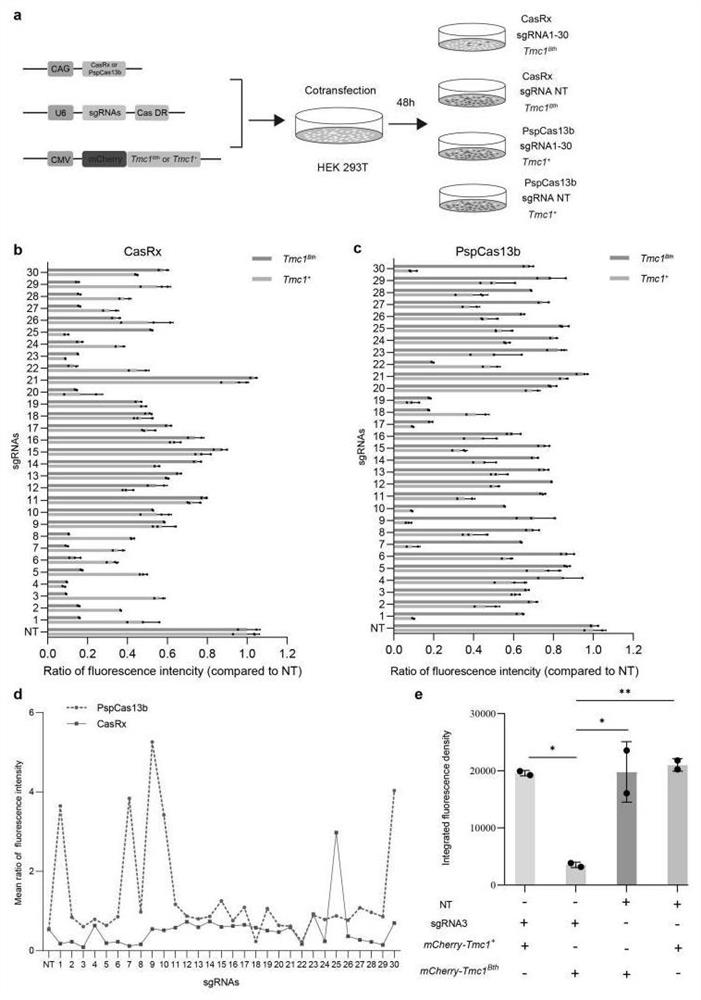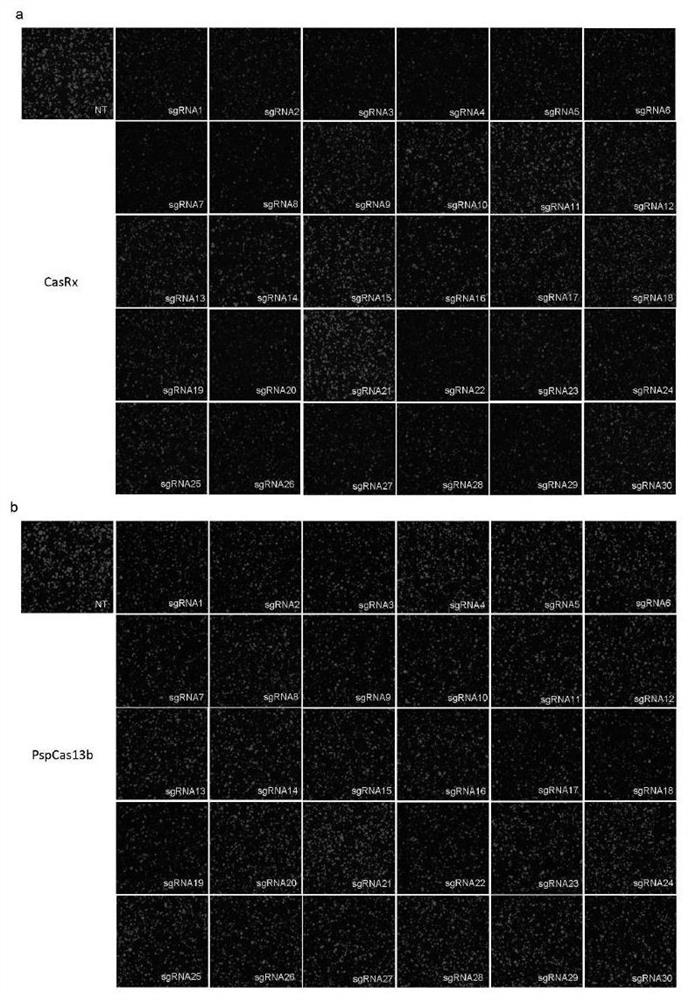CRISPR/CasRx-based gene editing method and application thereof
A construction method and targeted technology, applied in the field of genetic engineering, can solve problems such as lack of treatment for hereditary deafness, improve the morphology of hair cells and ciliary bundles, have no off-target effects, and prevent progressive hearing loss.
- Summary
- Abstract
- Description
- Claims
- Application Information
AI Technical Summary
Problems solved by technology
Method used
Image
Examples
Embodiment Construction
[0033] In order to make the objectives, technical solutions and advantages of the present invention clearer, the present invention will be described in detail below in conjunction with the examples. It must be pointed out that the following examples are only used to explain and illustrate the present invention, and are not intended to limit the present invention . Some non-essential improvements and adjustments made by those skilled in the art based on the above content of the invention still belong to the protection scope of the present invention.
[0034] 1. Examples of implementation methods
[0035] (1) CasRx specific knockout of Tmc1 in vitro Bth transcript
[0036] To knock down Tmc1 efficiently and specifically in HEK293T cells Bth mRNA, first compared two RNA editing systems, PspCas13b and CasRx, both of which were shown to efficiently knock down endogenous transcripts. Then 30 Tmc1-targeted Bth The sgRNAs of the transcript, in the PspCas13b and CasRx systems, th...
PUM
 Login to View More
Login to View More Abstract
Description
Claims
Application Information
 Login to View More
Login to View More - Generate Ideas
- Intellectual Property
- Life Sciences
- Materials
- Tech Scout
- Unparalleled Data Quality
- Higher Quality Content
- 60% Fewer Hallucinations
Browse by: Latest US Patents, China's latest patents, Technical Efficacy Thesaurus, Application Domain, Technology Topic, Popular Technical Reports.
© 2025 PatSnap. All rights reserved.Legal|Privacy policy|Modern Slavery Act Transparency Statement|Sitemap|About US| Contact US: help@patsnap.com



